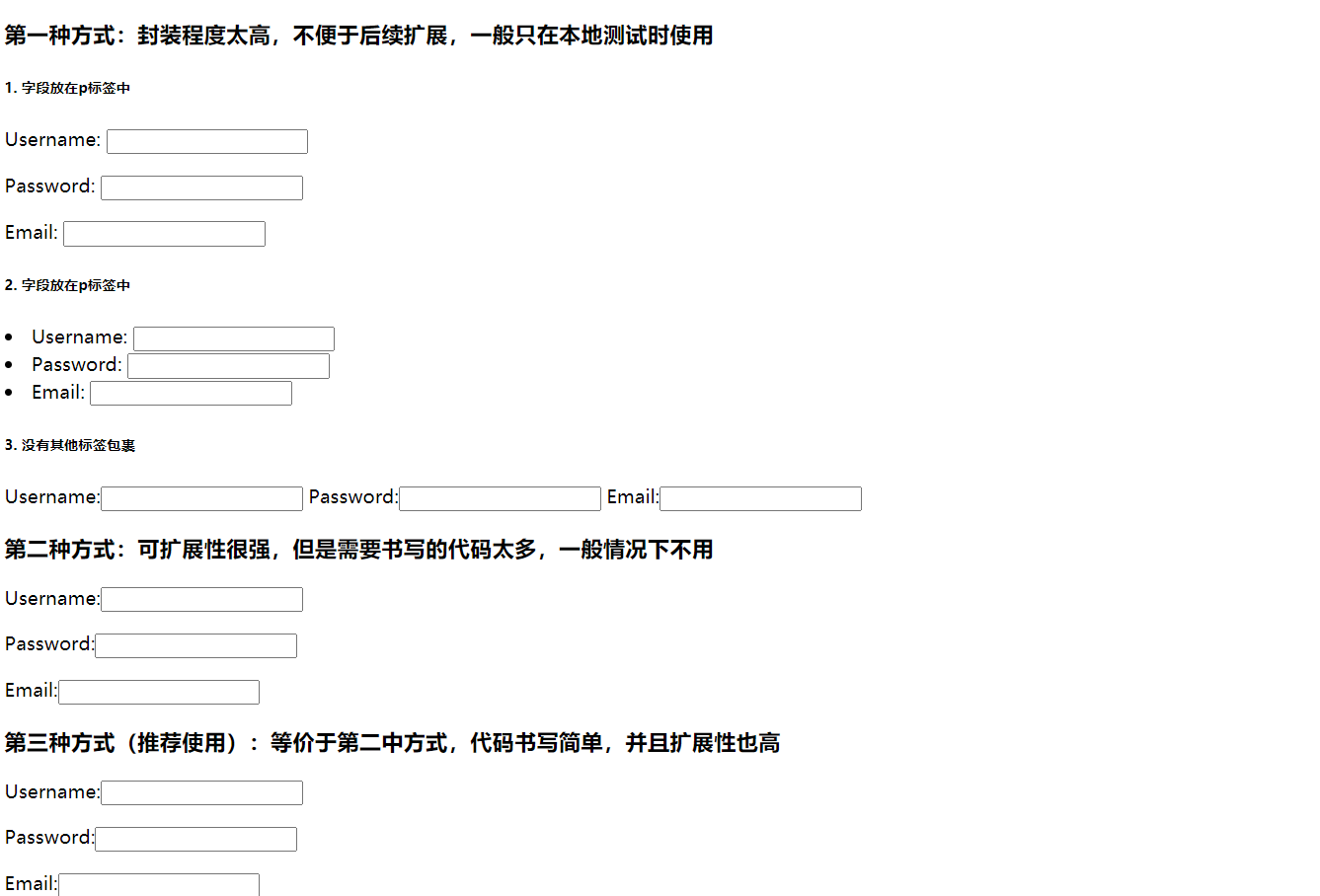forms组件¶
功能:
- 渲染HTML代码
- 校验数据
- 展示提示信息
1. 基本使用¶
1 2 3 4 5 6 7 8 | |
2. 数据校验¶
1 2 3 4 5 6 7 8 9 10 11 12 13 14 15 16 17 18 19 20 21 22 23 24 25 26 27 28 29 30 31 32 33 | |
3. 渲染标签¶
forms组件只会自动渲染获取用户输入的标签(input select radio checkbox),不能渲染提交按钮。
视图层:
1 2 3 4 5 6 7 8 9 10 11 12 13 14 15 | |
模板层:
1 2 3 4 5 6 7 8 9 10 11 12 13 14 15 16 17 18 19 20 21 22 23 24 25 26 27 28 29 30 | |
渲染结果

4. 展示错误信息¶
4.1 基本使用¶
视图层
1 2 3 4 5 6 7 8 9 10 11 12 13 14 15 16 17 18 19 20 21 22 23 24 25 26 27 | |
模板层:
1 2 3 4 5 6 7 8 9 10 11 12 13 14 15 16 17 18 | |
渲染效果

4.2 定制错误信息¶
1 2 3 4 5 6 7 8 9 10 11 12 13 14 15 16 17 18 19 | |
5. 钩子函数¶
1 2 3 4 5 6 7 8 9 10 11 12 13 14 15 16 17 18 19 20 21 22 23 24 25 | |
6. forms组件常用参数¶
1 2 3 4 5 6 7 8 9 | |
不同类型的input:
1 2 3 4 5 6 7 8 9 10 11 12 13 14 15 16 17 18 19 20 21 22 23 24 25 26 27 28 29 30 31 32 33 34 | |
7. form表单上传文件及后端操作¶
1. 前端¶
form表单上传文件类型的数据
-
method必须指定成
post -
enctype必须换成
multipart/form-data
1 2 3 4 | |
2. 后端¶
1 2 3 4 5 6 7 8 9 10 | |